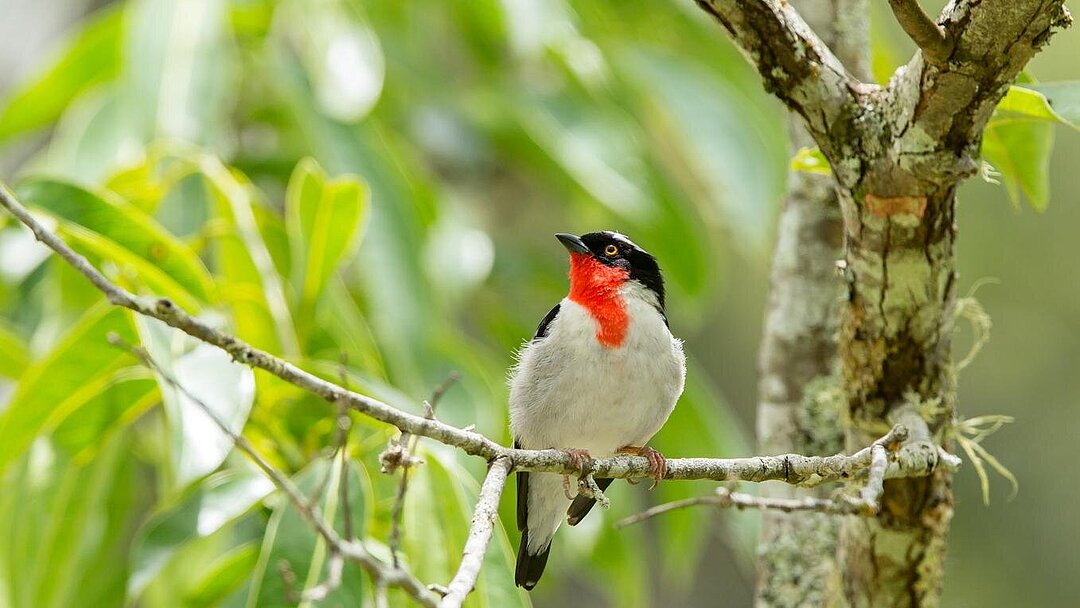
The cherry-throated tangar (Nemosia rourei) is an endemic songbird species: it only occurs in the state of Espírito Santo in eastern Brazil. It is one of the world's most threatened bird species and is listed as critically endangered by the IUCN. Approx. 14 cm long, the bird lives in the canopy of the rainforest and is characterised by its striking cherry red patch on the throat. Its remaining cloud forest habitat in the Atlantic rainforest is highly fragmented, however it is now well researched. In 2021, thanks to two successful broods in two areas, the total global population has encouragingly increased from 11 to 15 animals.
In Brazil, the Instituto Marcos Daniel manages the organisation and implementation of conservation measures for the songbird, which is on the verge of extinction. The key measures include protecting cherry-throated tanager nests in the two project regions (Caetés Forest and the Augustio Ruschi Biological Reserve) during the breeding season and preventing them from being plundered by predators in order to ensure the survival of their young. In addition, biological data on the reproductive and feeding behaviour of the species is collected in order to improve the long-term conservation of the species. In December 2021, the Instituto Marcos Daniel established a 284-hectare primary rainforest sanctuary for the cherry-throated tanager. And thanks to the funding from Hellabrunn Zoo and the project partners, an in-situ biologist and a field assistant were recently hired, who will be responsible for daily monitoring from the coming breeding season.
The measures are supplemented by an educational programme to raise awareness among the local population, which also works with schools and other groups in the Caetés forest region. This includes, for example, a travelling photo exhibition (Aves de Caetés), which is shown in schools and in public places and has so far reached more than 5,000 people. It has opened many doors, especially among the three municipalities in the region, with the environment, education and tourism departments joining the environmental education programme and supporting the implementation of the conservation measures.
"As a scientifically-led zoo and centre for species conservation and environmental education, it is our responsibility to regularly look beyond our zoo boundaries, in other words our own zoo operations and animal population, and to provide support where it is most needed and urgent. Together with the ZGAP and the participating zoos, we are trying to use the means available to us to turn back the hand that is almost at "one minute to midnight" for the cherry-throated tanagers," says zoo director Rasem Baban, explaining Hellabrunn Zoo’s support for the projects.